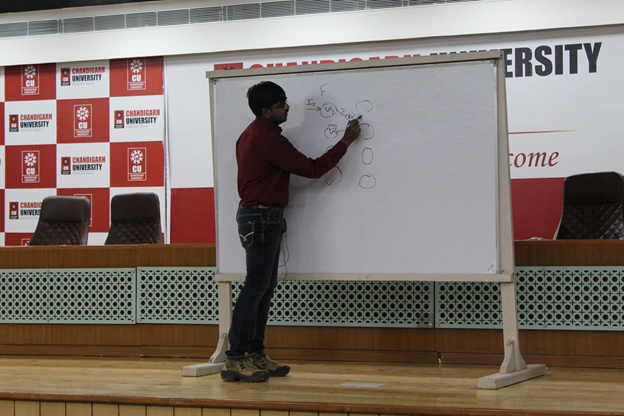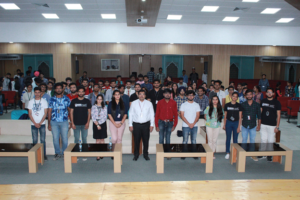Richard E. Merwin Student Scholar Promotes Technology Awareness at Chandigarh University

This article is based on a report from Rashi and Harneet Singh, students at Chandigarh University.
Richard E. Merwin Student Scholarship winner (2018), Shivam visited Chandigarh University to deliver a talk on machine learning, its applications, algorithms and recent advancements. The talk attracted an audience of 500 students and included a discussion on the benefits of membership in the IEEE Computer Society.
Types of Machine Learning
Shivam introduced the topic of machine learning by questioning the difference between humans and machines. He identified complacency as the most important distinction. “Humans,” he said, “often forget their original goals after attaining a sub goal, but in case of machines they keep on training themselves in order to become better.”
The two are similar in finding patterns, according to Shivam. Humans, for instance, learn from historical events in the same way machines learn from historical data. This discussion led him into an outline of the types of machine learning—supervised, unsupervised and reinforcement learning.
Ayush, a student in his third year at the Chandigarh University, said, “It was totally out of the box the way he explained different types of machine learning by giving the analogy of a student and a teacher and then connecting it to the machines. If a teacher is there to supervise the student, it would be supervised learning. If the student is learning on his own from the book, it’s unsupervised learning. And, if the student makes a mistake in his mid-terms and rectifies it in the end-terms, we’ll call it reinforcement learning.”
Applications of Machine Learning 
Shivam’s introduction to the types of machine learning prepared the way for a conversation about its application. The students learned about binary patterns and how descriptors, along with a simple K-Nearest Neighbor algorithm, increased accuracy when the machine-learning expert experiments with different distance metrics.
Emphasis was placed on the need to understand the mathematics behind an algorithm before putting it to use. Shivam insisted that in machine learning a small change in a single parameter could greatly improve accuracy.
Shivam followed his discussion of the K-nearest neighbor algorithm, with a presentation of artificial neural networks. he distinguished between a convolution neural network and a densely convoluted neural network, explaining that the dense convoluted neural networks are used in medical diagnosis because there are very minute differences in the medical images that an ordinary convolution neural network algorithm fails to detect, due to dropouts.
Benefits of Membership
The presentation closed with the story of Shivam’s journey in the IEEE Computer Society, which began in his second year of university and has led to his becoming a Richard E. Merwin Student scholar.
In discussing his own story of membership with the Society, Shivam also pointed out some of the benefits the Computer Society has for students in the audience—whether they are interested in careers in academia or industry.
The talk touched on the impact the IEEE Computer Society has made over the years and the value of connections the Society provides members. He explained to students how the IEEE Computer Society helps an individual to grow as a technology leader.
The discussion was lively and continued for half an hour. Students offered their thoughts and questions for the speaker, and, at the end of the event, the Dean of Chandigarh University offered Shivam a gift to mark the occasion.

Leave a Reply